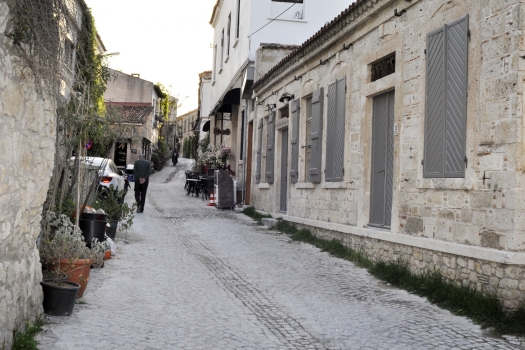
ALAÇATI IS AN 'ORGANISM' THAT LIVES FOR TWELVE MONTHS
Today, Alaçatı is one of the most popular holiday resorts in Turkey. Alaçatı, known as Agrilia in ancient times, is a small village settlement located on the Çeşme Peninsula, which extends into the blue waters of the Aegean. Although the history of settlement in the region dates back to 3000 BC due to its port nature, the current appearance of the Alaçatı village center dates back to 1800 AD. It is possible to see this effect in the architecture and urban fabric of the old Greek village of Alaçatı. The high walls and privacy concept in Turkish-Islamic architecture have given way to a form of construction integrated with the street and social life. Similarly, while there is no city/village square structure in Islamic culture, Alaçatı village squares are shown among the ten most beautiful squares of our country today. Climate, geographical conditions and topography are other important determinants of architecture. In order to protect from the prevailing south wind in winter and the oppressive effect of the sun in summer, the architectural and street texture was shaped on the north-south axis, and the characteristic Alaçatı stone quarried in the region is the main material of the construction.
We see in the sources that the name Alaçatı comes from the Alacaat tribe that was settled in the region during the early Ottoman period. The village, which made its living from viticulture and winemaking for centuries, was replaced by olive and olive oil production after the population exchange, with the settlement of Turks more intensively. The rich Turkish cuisine has diversified with the herbs and vegetables grown in the fertile lands of the Aegean and has turned into a unique food culture.
The town, which is a sought-after address in the summer season due to its mild climate and world-famous beaches, began to become an important surfing center in the 1990s due to its favorable wind structure. Over time, it has been increasingly discovered and loved thanks to its cute architecture, enjoyable boutique hotels that opened one after another, and restaurants offering quality Aegean cuisine alternatives. Being only an hour away from Izmir city center and offering calm and organic living qualities, it has started to receive more immigration in recent years. In addition to its enlightened and open-minded locals, the cultural infusion of those who came from big cities and settled in Alaçatı is yielding extremely successful results, and today's Alaçatı is becoming a modern village facing the west.
The streets of Alaçatı offer a spontaneous urban texture where you can drink coffee while feeling the breeze in your hair, taste the most delicious examples of Aegean cuisine in an elegant ambiance, listen to all kinds of music from jazz to Turkish style and have pleasant conversations, shop from the boutiques of famous designers around the country, and forget about time by visiting art galleries and antique shops. In addition, you can swim in the nearby bays, see the small villages on the peninsula, and go on viticulture and wine tasting trips to Urla. You can tour the ancient city of Erythrai and visit the largest Olive Oil Museum in Europe. You can also catch many events such as the Herb Festival, Kite Festival, PWA Surf Competition, Big Fish Tournament, Alaçatı Art Week.
The measures taken to protect the qualified urban texture of Alaçatı today create a settlement in which we can live with pleasure. Measures such as architectural structure and floor height restrictions, restrictions on the use of plastic tables and chairs, and the protection of the cobblestone street texture have yielded extremely successful results. However, what makes Alaçatı what it is and what needs to be protected as much as its spatial beauties is its culture of life. The main components underlying this culture, such as calmness, respect for neighbors, support for art and artists, support for local production and localization, long-term development goals rather than short-term ones, and sustainability, require greater sensitivity to be protected and observed from now on. Alaçatı has been facing a mass tourism movement with its increasing popularity in recent years. At this point, the importance of the protection-use balance in tourism is increasing even more. The maintenance of the service quality and boutique service approach that can be achieved in very few tourism regions is also essential for Alaçatı to maintain its claim in tourism. It is necessary to spread a protective tourism approach; to create awareness that Alaçatı is not just a two-month holiday resort, but an 'organism' that lives for twelve months with a strong culture of life.
Transferring and disseminating Alaçatı's exemplary urban texture and lifestyle to future generations in a healthy manner is an indispensable priority, first of all for us, the residents of Alaçatı and those who run businesses here, and then for our guests who come long distances to taste these beauties.
